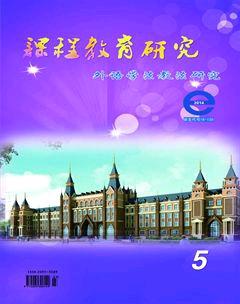浅谈如何实现英语写作中的篇章连贯性
洪晖
【摘要】本文阐述了英语写作中篇章连贯的重要性,并通过实例介绍实现连贯性的方法,包括如何运用连接性词语(transitions)。
【关键词】英语写作 篇章的连贯性 连接性词语
【中图分类号】G64 【文献标识码】A 【文章编号】2095-3089(2014)05-0103-02
写作能力是中国学生学英语的一大难点。听说读写中,学生的写作能力严重滞后。不管是大学公共英语还是专业英语,学生的思维能力,学生能读懂的材料,与他们写出的文字相比,可谓有天壤之别。
在大学英语等级考试中,写作部分一直以来都是大多数考生得分较差的部分,如何提高学生的英语写作水平,也一直是英语教师所面对的最大难题。通过调查发现,学生英语作文中普遍存在的问题就是篇章连贯性较差。根据大学英语等级考试大纲规定,写作部分要求学生用英语进行短文写作,思想表达准确,意义连贯,无重大语法错误,而其考核的技能则包括有思想表达,篇章组织,语言运用与写作格式。其中篇章组织技能则具体指围绕所给题目叙述、议论或描述,突出重点并连贯地组句成段,组段成篇;语言运用技能中也包括运用衔接手段表达句间关系(如对比、原因、结果、程度、目的等)。由此可见,篇章的连贯性在英语写作考试中占有非常重要的地位。
所谓连贯性是指文章中心思想的阐述要合乎逻辑地、清晰地、前后有联系地展开,并且段与段之间利用转承过渡手法自然顺畅过渡。在篇章中表现在句子或段落衔接紧凑、自然流畅、语义连贯、合乎逻辑等。这样的篇章才能让评卷老师迅速而准确地捕捉文章信息。反之,叙述顺序混乱、前言不搭后语的文章会因“缺乏可读性”而被判为较低的得分档次。因此,下面我们将重点探讨英语写作中篇章连贯性的巧妙运用。为使篇章具备连贯性,可以经常采用以下四种方法:
1.使用代词来替代句前、句后的名词或从句等
例如:The brain is the controller, the organizer and the information-processing center of the body. It is the boss. It runs the show. And it acts like the boss, freely exercising its privileges and prerogatives.
2.适当重复关键词或句子
例如:With this faith we will be able to hew out of the mountain of despair a stone of hope. With this faith we will be able to transform the jangling discords of our nation into a beautiful symphony of brotherhood. With this faith we will be able to work together, to pray together, to struggle together, to go to jail together, to stand up for freedom together. Knowing that we will be free one day.
尽管不必要的重复应该避免,但有目的地对一些关键词语或句子进行重复却会使段落的内容更紧凑,主题更突出。因此,此法一般多用于演讲稿中。
3.使用同义词或近似表达
同义词从修辞角度看,可以避免重复,防止单调。此外,同义词可以加强说话的语气或把它们所在的句子或段落彼此衔接。
有的同学用词贫乏,词语重复现象简直令人难以忍受,如作文 My View on Retirement 中的一段:
Retirement often brings people many problems such as “What shall I do today” problem, though they may not have economical problems. People observe that apart from economical problem, retirement also brings many psychological problems. Many people often get psychological illness and even deteriorate rapidly when people are retired.
在总共只有48个单词的这一小段中,retirement就重复了两次,problems重复了五次,economical重复了两次,people重复了四次,many重复了三次,often重复了两次。为了避免词语无意义重复,最好方法就是追求词语的变化,精心选用同义词可使文章更加生动。因此,上面的段落可试做如下修改:
Retirement often brings many problems surrounding the “What shall I do today?”question, even though there may be no economical cares. It has been observed that withdrawal from work quite aside from exerting financial pressures,brings enormous psychological troubles. Large numbers of people tend to get some illnesses and even deteriorate rapidly when jobless.
4.使用连接性词语(Transitions)衔接句子或段落(下面作具体介绍)
当然,在一个意义完整的段落乃至全篇文章里,这四种方法的使用不能是孤立的,应该是它们的综合运用。只有这样才能保持篇章的连贯性更好。
在一本美国出版的学习英文写作的教材书American English Rhetoric, A Writing Program in English as a Second Language(《美国英语修辞学》,作者:Robert G Bander)里面,作者告诉我们,英语写作有两个最重要的技巧,它们在你写作文时给你的帮助比其他任何技巧给予的帮助都要大。它们是:Transitions 和Subordinations。(American English Rhetoric, A Writing Program in English as a Second Language) Transitions即指英语词句与段落之间的连接性词语。使用和没有使用连接性词语的效果肯定是不一样的。
例如:I set out for the biggest bookstore in town. At the school gate I saw a girl of my class. She was going there, too. We decided to go together. We walked. The bookstore was not far away.
When I set out for the biggest bookstore in town, I saw the school gate a girl of my class. She was going there, so we decided to go together. We walked, for he bookstore was not far away.
. 以上两段落基本上都使用的是简单句,但使用了连接性词语后,第二段比第一段的结构更紧凑、条理更清楚、语义更连贯。从这两段不难看出连接性词语的使用是实现句子间连贯的重要手段。
在英语写作中,为了使段落与段落的排列组合合乎逻辑(义连);句子间以及段落间的过渡自然流畅(形连),连接性词语的运用是必不可少的。连接性词语一般在段落首句的开头,有时也会出现在句中或句末。放在什么位置应由连接性词语的作用和行文的要求来确定。从整体篇章而言,连接性词语可大致分为“启、承、转、合”:
1.用于开“启”文章,常置于主题句前后
at present, currently, first(ly), first of all, generally speaking, in general, lately, now, recently, to begin with, for one thing (与for another连用) , on the one hand (与on the other hand连用)
2.表示“承”接,一般用于段落中间,可举例,可用同义词说明,可进一步解释补充内容等
and, also, besides, again, moreover, furthermore, for example/instance, in addition, in other words, in particular, in the same way, likewise, meanwhile, moreover, not only, namely , that is, or, secondly, similarly, whats more, above all, certainly, important of all, to make matter worse
3.表示“转”折,常置于段落中
although, but, despite, however, in contrast, in spite of, nevertheless, on the contrary, on the other hand, unlike, unfortunately, still, whereas, yet
4.表示“合”一,一般用于段落小结或引出结尾段
above all, accordingly, as a result, consequently, finally, in a word, in conclusion, in summary, so, therefore, thus, to sum up
总之,篇章的连贯性主要体现在句与句、段与段之间。句与句之间要前后呼应,形成句句相连,环环相扣,读起来一气呵成;同样,段与段之间也要过渡自然,不可各自独立使文章失去整体性。所以可以说篇章连贯性是评价一篇文章优劣的标准之一。只有有效地使用语句间的连接成分,使全文结构紧凑,篇章的连贯性才能得到有力体现。而连接性词语在篇章中既能连接句子,又能连接段落,使文章条理清楚,逻辑严密。因此这些词语在英语写作中缺一不可。当然,连接性词语看似简单,但要使用得当,并非易事,弄不好不仅不能起到承上启下的作用,反而会影响或破坏句子之间,段落之间的连贯性。只有正确使用连接性词语才使文章扩展得自然流畅,既形连又义连,从而使整篇文章的内容得到完善。
参考文献:
[1]胡壮麟. 语篇的衔接与连贯[M].上海: 上海外语教育出版社, 1994
[2]庞彤心,许海萍. 实用英语写作技巧[M].广州: 广东人民出版社,1997
[3]郑征,廖译. 大学英语写作进阶[M].珠海:珠海出版社,1998
[4]丁往道,吴冰. 英语写作基础教程[M].北京: 高等教育出版社,2005

